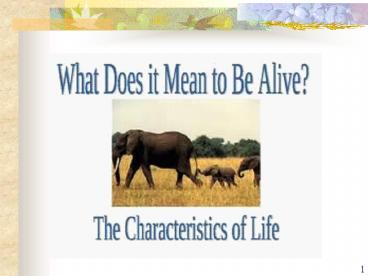Chapter 1 The Science of Life - PowerPoint PPT Presentation
1 / 12
Title:
Chapter 1 The Science of Life
Description:
* Cells-The Basic Unit of Structure and Function All living things are composed of cells In multicellular organisms many are specialized to perform specific functions ... – PowerPoint PPT presentation
Number of Views:75
Avg rating:3.0/5.0
Title: Chapter 1 The Science of Life
1
(No Transcript)
2
Cells-The Basic Unit of Structure and Function
- All living things are composed of cells
- In multicellular organisms many are specialized
to perform specific functions - Cells are always very small
- The size of multicelled organisms depends on the
number of cells NOT their size
3
Organization
- Organized at both the molecular and cellular
levels - Take in substances from the environment and
organize them in complex ways - Specific cell structures (organelles) carry out
particular functions
4
(No Transcript)
5
- In multicellular organisms, cells and groups of
cells (tissues) are organized by their function - Cells ? tissues
- Tissues ? organs
- Organs ? systems
6
Energy Use
- Use energy in a process called metabolism
- Sum of all chemical processes
- Require energy to maintain their molecular and
cellular organization, grow and reproduce
7
Homeostasis
- Maintain stable internal conditions
8
Growth
- Grow as the result of cell division and cell
enlargement - Cell division is the formation of two cells from
a preexisting cell - New cells enlarge as they mature
9
Development
- The process by which an adult organism arise is
called development - Repeated cell divisions and cell differentiation
10
Reproduction
- All species have the ability to reproduce and
produce viable offspring. - Not essential to survival of individual but is
essential for continuation of a species
11
Responsiveness
- Respond to stimuli in the external environment
- Detect and respond to changes in light, heat,
sound and chemical and mechanical contact - Coordinates its responses
12
Evolve
- Ability to adapt to their environment through the
process of evolution - Favorable characteristics are selected for and
passed on to offspring - Those characteristics are called Adaptations.































